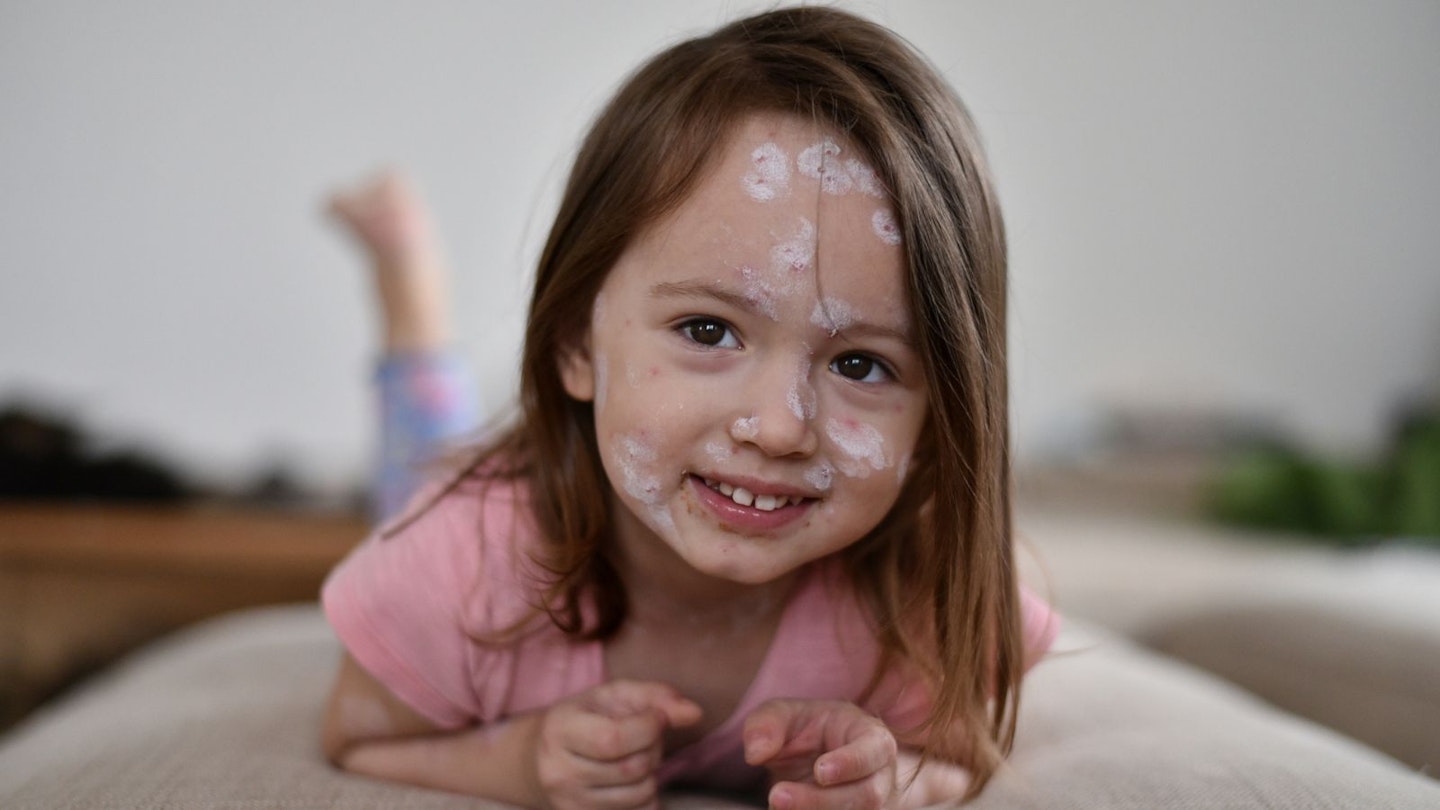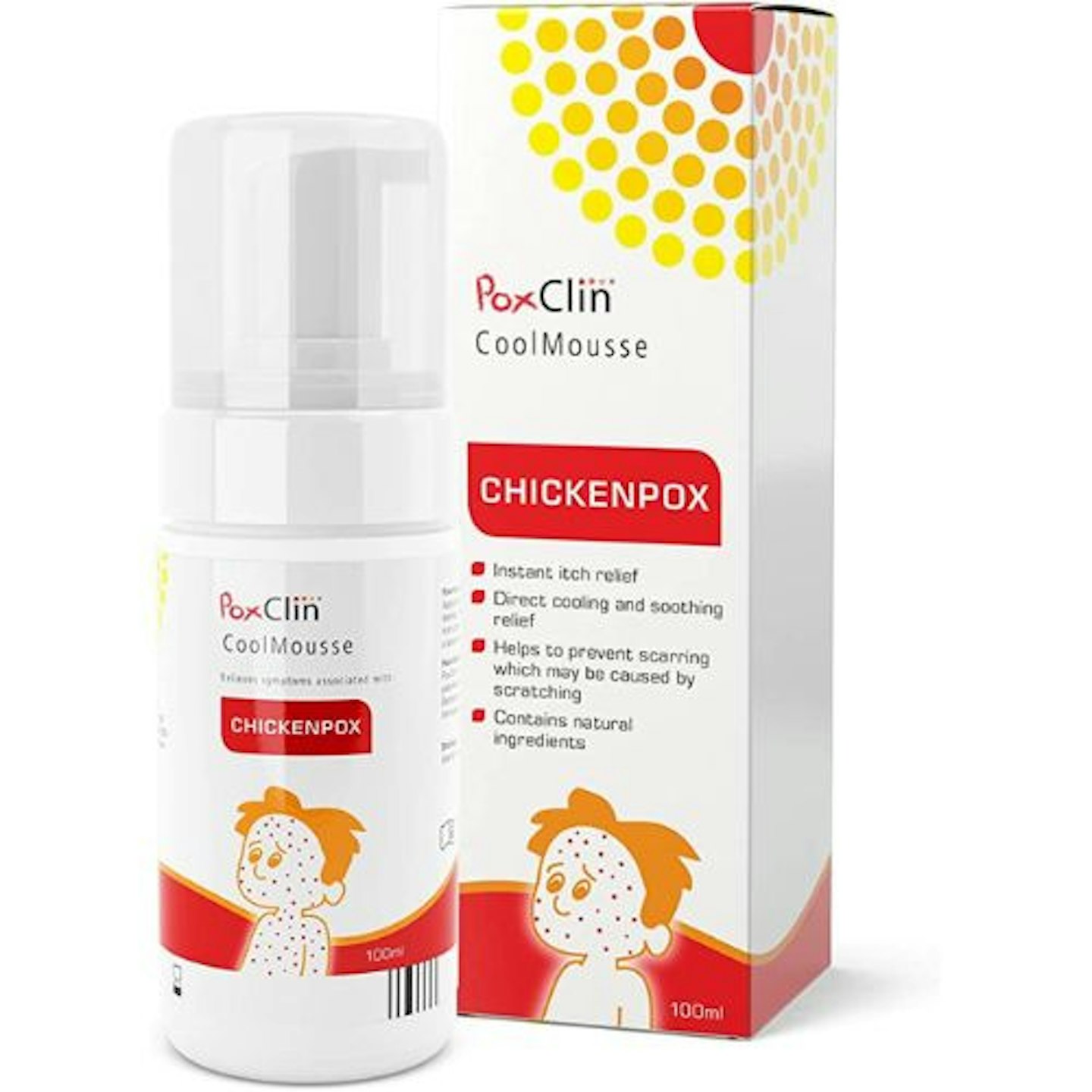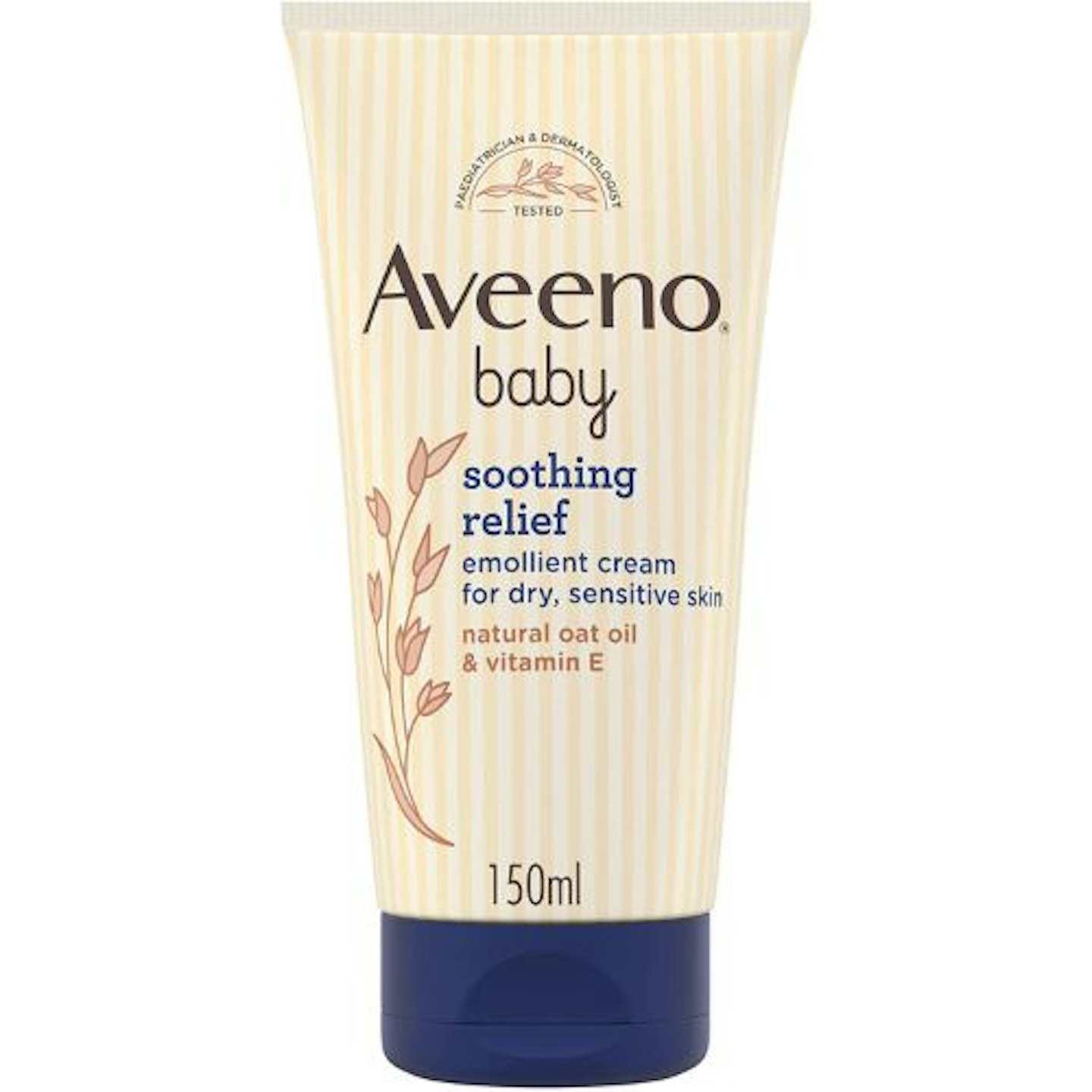When your child contracts chickenpox, it can be very frightening, especially if they're the first child in the family to get it and you will be grateful to have the best chickenpox treatment at the ready. Your little one will suddenly be covered in spots and you'll be wondering how to look after them while they're poorly. But don't panic — nearly all children will get chickenpox at some point in their life, however, it can be very difficult to know which chickenpox treatments will help because there are a few to choose from.
There is no specific treatment for chickenpox but the good news is that there are over-the-counter remedies, which may help your little one to deal with the symptoms and which will help soothe and ease discomfort like fever and itchiness. There are also some tried and tested natural remedies that some people swear by. It's all about what works for your family and things you might want to consider when purchasing chickenpox treatments include, the effectiveness of reliving itching, reducing fever, how easy it is to use, the cost, safety, side effects, and also if it has been recommended by health professionals.
Best chickenpox treatments at a glance:
Best overall chickenpox treatment: PoxClin CoolMousse, £8.39Best chickenpox treatment for fever: Calpol Sugar Free Infant Suspension, £3.28
Best chickenpox treatment for itching: ViraSoothe Chickenpox Relief Cooling Gel, £10.49
Best natural chickenpox treatment: Aveeno Baby Soothing Oat Bath Sachets, £6.75**
Best topical chickenpox treatment:** E45 Dermatological Itch Relief Cream, £24.50
It is important to find a remedy which will ease your little one's discomfort whether that is itchiness or fever, but remember it won't last forever. Within two weeks, the spots will blister and should naturally crust over and fall off without any need for further intervention, plus any baby rash your child might have should heal too. Then your child will start to become more like themselves as they get better.
Chickenpox is a rite of passage and your little one will recover, it's just a case of finding what works for your child to help them through. This article includes my personal experience with the best chickenpox treatments.
How we chose and tested the best chickenpox treatments
Our product recommendations are based on a combination of real-world testing from our burgeoning army of mum testers and the extensive knowledge of our experienced editorial team and product specialists. Where we can, we also consult experts who specialise in the field to ensure you get the right advice along with the right product, and we listen to what you say as well. For chickenpox treatments we got advice from Dr. Costa, a member of the Royal College of Paediatrics and Child Health and Dr Luke Powles, Clinical Director for Bupa Health Clinics.
Our thriving mum community on our Facebook group #mumtribe also often hold great insights as to which products mums really like best and why, helping us highlight the products that meet what you really want.
For the essential products, our annual Mother&Baby Awardsshortlist the top products tested, and you can find full reviews from our mum testers provided on the product page. The winners and runners-up for each category then will appear in our top picks article for that product, along with other products that were rated highly by our team.
When it comes to the best chickenpox treatment, we considered various things such as budget, effectiveness, ease of use and size. Our testers also assess the products based on quality and value for money, and score them out of ten. Their score is used to determine the awards. Find out more about how we test products for Mother&Baby.
Chickenpox treatment safety
Chickenpox is a common childhood illness, however, it can be uncomfortable and treatment is used to limit the discomfort of fever and itching. Generally, most of the products available for treating chickenpox are safe for use on children, but always check the ingredients so you can be sure there is nothing included which your child might be allergic to.
It is important to know that you should not use ibuprofen to treat fever or pain when your little one has chickenpox. As Dr. Costa, a paediatric consultant, says: "There have been many cases where giving Ibuprofen to someone with Chickenpox has led to the development of a serious bacterial skin condition called Necrotising Fasciitis." He also advises against the use of aspirin, saying: "Do not give your child aspirin, as there is an increased risk of developing Reye’s Syndrome (a rare condition that can lead to swelling of the tissues, including the brain)." Chickenpox is not normally dangerous but if your little one has got chickenpox then you should avoid taking them near to newborn babies, pregnant women or anyone with a weakened immune system. You can use paracetamol (Calpol) to help with pain and cooling creams or gels to soothe itching. It may be possible to use an antihistamine medicine to ease itching, however, to be safe, speak with a pharmacist first. Dr Costa advises: "Traditional creams, like calamine lotion are still the best to help ease the itching and dry the lesions. Chlorphenamine (often sold as Piriton) can also be given to decrease itching and help your child sleep. Cool baths with either baking soda or uncooked oats can also help to ease discomfort."
Types of chickenpox treatments
There are various ways to treat chickenpox and some target the itching, while others target any associated aches or fever. Bupa says that your child shouldn't need any medical treatments, instead products which bring relief from the intense itching. They also suggest wearing light, loose clothes, keeping hydrated and trimming fingernails so they don't damage their skin if they do scratch.
Pain relief: Paracetamol is the best option for pain relief when treating chickenpox and it will also help to bring down any fever. You can use any liquid paracetamol product, such as Calpol.
Topical treatments: There are various options for topical treatments including cooling gels, foam, or cream. They will all work to ease itching and bring some relief as well as helping to prevent scratching. You can also use lotions such as calamine lotion which is drier and will dry on the skin, whereas a cream will be absorbed, as well as a foam.
Antihistamines: If your child is over the age of one then you might be able to use an antihistamine such as Piriton to control the itching. However, it is best to check this with a Pharmacist, or doctor.
Cool baths: As well as topical treatments, it might help your child to have a cool bath, especially an oatmeal bath. Gentle enough for even newborns, an oatmeal bath has healing, moisturising and antioxidant benefits and it will be soothing too.
How to use chickenpox treatments
How you use a chickenpox treatment depends on what you need it for. For pain relief or fever, the best choice is paracetamol and you will need to follow the guidelines on the box according to your little one's age. Typically paracetamol can be given every four hours.
For topical treatments, you will need to apply them as they are required, when the itching becomes too intense, and after a bath. These can normally be applied directly to the skin and gently rubbed in or left on the surface.
Antihistamines will also help itching and these should be given under the guidance of a pharmacist and only once you little one is older than one. Again, ensure you follow the directions on the box.
If you decide to give your little one an oat bath then keep the water cool, and you can either use a ready-made oat mix such as Aveeno Baby soothing oat bath soak, or you can make your own mix. Simply stuff a pair of tights or muslin cloth with half a cup of oats and tie it to prevent any spillages, then dip it into the bath a few times. You can then use the oat-filled cloth to pat your little one's skin, especially on the itchy areas.
How to choose the best chickenpox treatment
Use: Choose the right product for what your little one needs. Consider if they are struggling with the itchiness or the fever and choose the most appropriate product, or perhaps a combination of both such as a topical treatment for itch relief and paracetamol to keep the fever down.
Size: Both pain relief and topical treatments can be expensive so consider the size of the product to ensure you will have enough to see you through.
Ease of use: It is hard enough when your little one is poorly, without difficult treatments to administer. Consider what you need and what is most comfortable for your baby. If they don't like taking paracetamol, there are options such as sugar-free or various brands which might vary in taste. Also consider topical treatments, and how messy they might be and whether cream, foam or gel will be easier for you.
Safety and side effects: Always check the ingredients and ensure there is nothing your little one is allergic to. Always take note of recommendations such as avoiding ibuprofen to make sure you are making the right choice. If you are unsure then always consult your doctor or a pharmacist.
Effectiveness: Look at reviews from other parents to see how well products work and if you have older children you might find that what worked for them will work for your little one too.
Healthcare recommendations: If a doctor or pharmacist suggests a particular product, then choose that one. Also check if treatments have been approved by healthcare professionals.
Cost: Treatments can be expensive especially if you buy a few to try them. Sometimes simple remedies like an oat bath can be just as effective as an expensive cream. If there is a brand that you know you prefer then go for that, but do consider cost and choose treatments that suit your budget.
Do you need a chickenpox treatment?
Chickenpox shouldn't need a medical treatment and most children will get over it without requiring any treatment. Dr Luke Powles, a Clinical Director with Bupa, says: "Many don’t need treatment for chickenpox. Often, symptoms can be managed at home, and you’ll usually feel better after a week or so. However, if you or your child are struggling with itching, over-the-counter anti-itch creams and medicines, along with cooling gels and cool, wet flannels applied to the skin can help reduce irritation, too."
A topical treatment such as a cream or gel will make them feel more comfortable and relieve the itching, but it won't speed up the course of the infection. Similarly, pain relief, such as paracetamol will lower the fever and help with any aches and pains but it won't treat the infection. Chickenpox will run its course and within two weeks your baby should feel better and more like themselves.
The best chickenpox treatments 2024
Best overall treatment for chickenpox
PoxClin CoolMousse Chicken Pox Treatment for Children is a foam mousse which helps relieve the uncomfortable symptoms of chickenpox and our testers loved that it works fast to provide instant relief. This in turn reduces the likelihood of permanent scarring which we like, however, for a topical chickenpox treatment it is quite expensive. The mouse is intended for large areas of the body and dries very quickly, without leaving any residue, but you will use large amounts, so something for smaller areas like E45 Dermatological itch relief cream might be a better option for individual spots. This mousse contains natural ingredients, including chamomile which testers loved for its anti inflammatory benefits.
My experience: "Once the spots had all come out, it was hard to stop my toddlers from itching. I achieved this by telling my eldest son he might turn into a chicken (parenting at its best). But my two-year-old wasn't easily scared. This product was wonderful. It was easy to put on, and I could very quickly see the relief it gave to both my children."
Pros
- Great for helping with itchy and irritated skin
- Works fast
- Easy to apply
Cons
- Slightly more pricey
| Volume: | 100ml |
| Ingredients: | Natural ingredients including chamomile |
- Natural ingredients including chamomile
- Absorbed fast
- Easy to apply
- Nice scent
- Doesn't leave residue
Best chickenpox treatment for fever
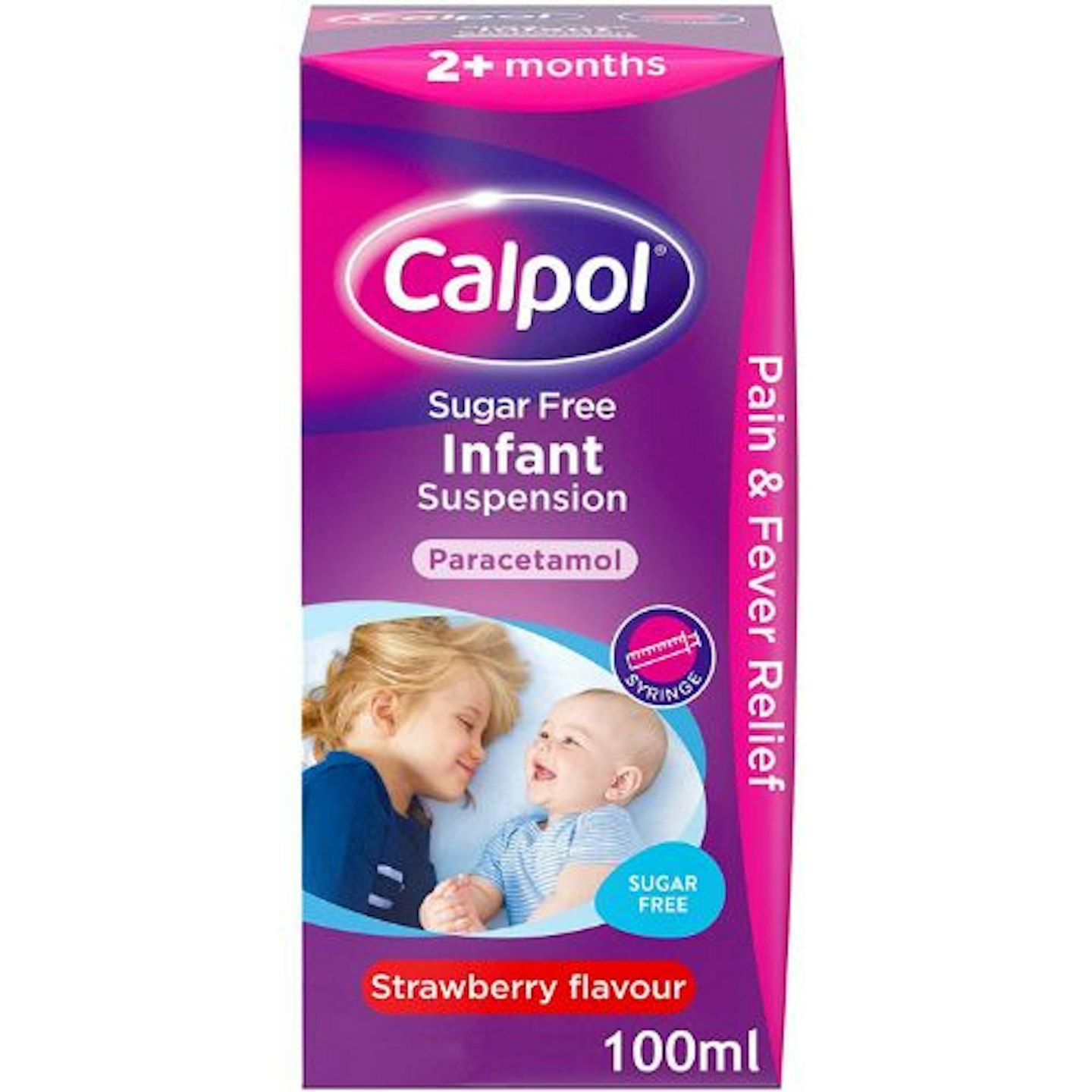
As parents we already know that there are not a lot of illnesses that can't be helped by Calpol! This Sugar Free Infant Suspension is ideal to bring down any fevers associated with chickenpox as well as easing any aches and pains. Our testers love that this works quickly and it is gentle on your little one's tummy, plus as we mentioned it is great for tackling pain too. Always make sure that you read the dosage instructions and unfortunately you need to buy a different version of Calpol for any children over the age of six. We like that despite being sugar-free, it is still an appealing taste to children, which makes giving them medicine when they are poorly easier.
My experience: "When my two toddlers became ill with chickenpox, I had no clue what to do. For weeks I had seen a notice on the front of the nursery door stating that children may have been exposed. But, it was still a shock when they became unwell. After frantically Googling all of their symptoms, I was confident they had chickenpox. My two-year-old was complaining that he felt very unwell. Calpol was brilliant at helping his pain. I kept him topped up every four hours at the dose stated on the box. By the end of the day, he was playing as usual, albeit while looking very spotty."
Pros
- Enjoyable flavour
- Sugar-free
- Widely available
Cons
- Need to make sure you get a specific age range for your child
| Volume: | 100ml |
| Ingredients: | Paracetamol |
- Reduces fever
- Eases aches and pains
- Sugar-free
- Pleasant taste
- Suitable for children up to 6 years old
Best chickenpox treatment for itching
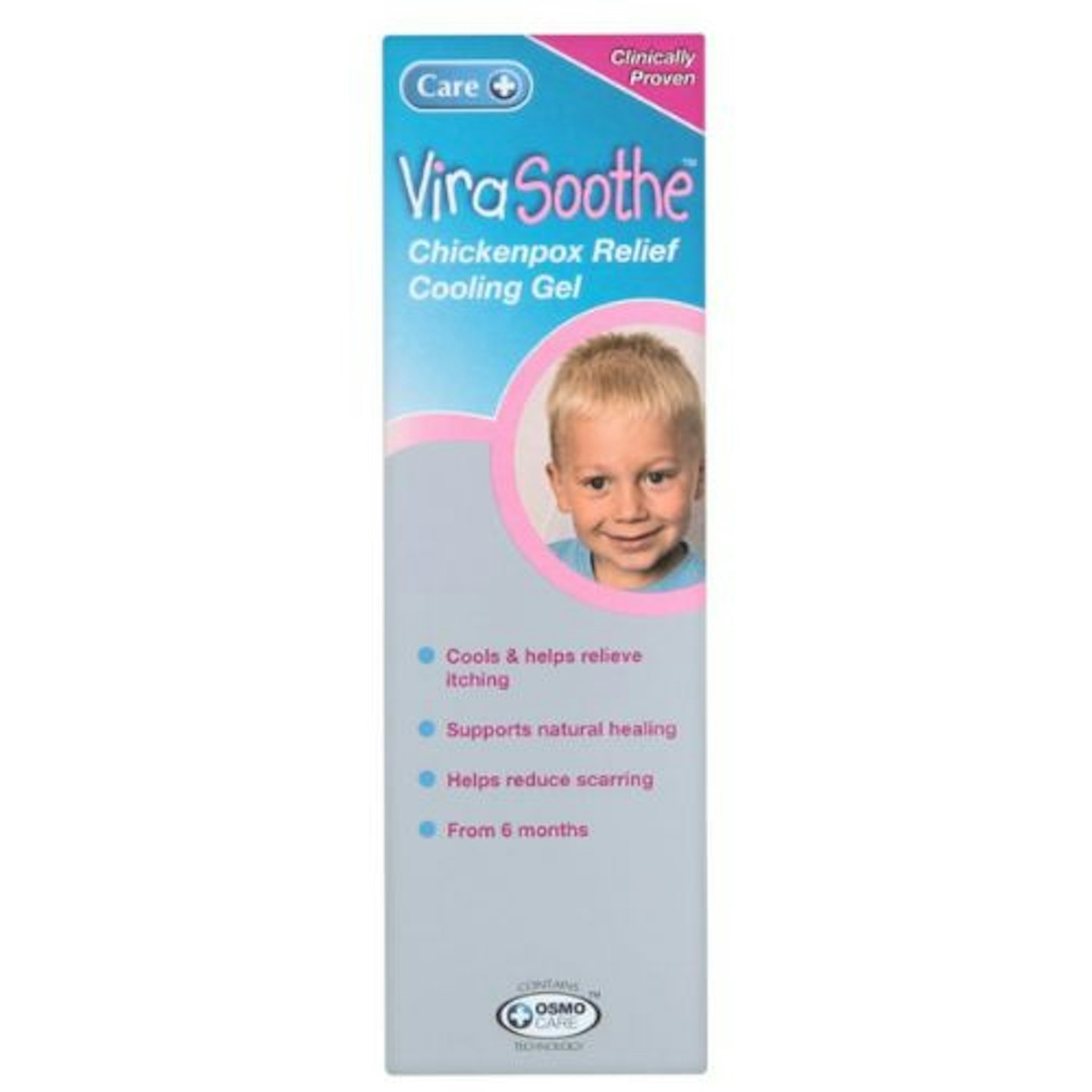 Boots
Boots www.boots.com
This clinically proven cool gel helps to relieve the irritating symptoms of chickenpox by cooling the skin. Our testers were impressed with OSMO Care, a patented technology, which has been clinically proven to offer relief by cooling the skin and thereby reducing itching and thought it was effective. However, this does come at a price because it is quite expensive. We also liked that is easy to use and not too messy. Our testers did report that there was little to no scarring when using this product. If you prefer something with more natural ingredients then PoxClin CoolMoussecontains chamomile.
My experience: "I used this for my eldest as the moose was unavailable at first. He had significantly fewer spots than my other son, but with Virasoothe, he seemed to be unbothered by the spots. His spots healed very quickly, and he did not have any scarring afterwards. I used this regularly throughout the week he was unwell."
Pros
- Cooling and soothing relief
- Suitable for six months upwards
- Easy to apply
Cons
- Slightly more pricey
Best natural chickenpox treatment
Oat milk has been an age-old remedy for soothing dry or irritated skin, and we can tell why. However, when your little one is poorly you might not want to fiddle around making your own oat compress, or digging in the cupboards for oats. These sachets from AVEENO are great to keep in your medicine cabinet. We love that oats provide amazing bacteria-battling properties and the AVEENO Baby Soothing Oat Bath Soak is convenient and very simple to use. Plus, our testers liked that it's calming for your little one too. Do bear in mind that there are only five sachets in the pack, so one pack might not see you through the entire period of your child's illness.
My experience: "I previously tried to make oat milk bath with porridge oat in a pair of old tights. It was a disaster. The tights were ruined, and there was a lot of mess. So when I learned that Aveeno had created an easy-to-use bath soak, I was delighted. The oats have been ground into a powder which you sprinkle into your child's bath. I found this was great for the boys when they had chickenpox. I didn't want to use any products that may irritate their skin further, so this was perfect."
Pros
- Affordable
- Dermatologically tested and unscented
- Soothing and relieving
Cons
- Only get five sachets
| Volume: | 5 x 21g bath sachets |
| Ingredients: | Oat flour |
- Calming and soothing
- Mess free solution for an oatmeal bath
- High concentration of oats
- Easy and convenient to use
Best chickenpox treatment for the bath
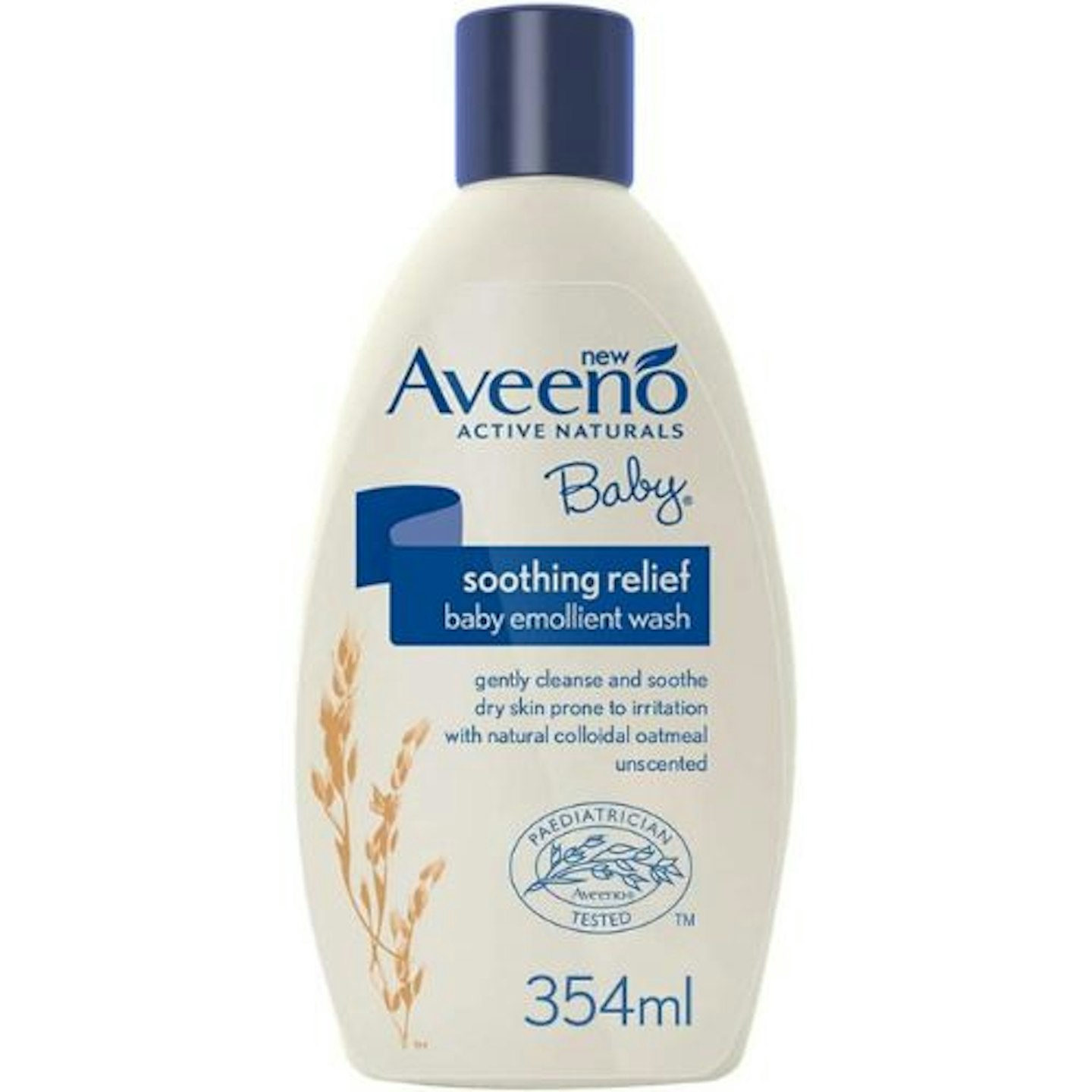
www.boots.com
If you're looking for the calming effects of oat milk but with a little more convenience, the AVEENO Baby, Emollient wash is a winning choice for your household. This lovely soap-free wash is perfect for bath time when your little ones have chickenpox. We love that it's proven to help relieve dry skin too. It is perfect for a gentle bath to keep irritated skin clean, although for a higher concentration of oats, then you might prefer AVEENO Baby, bath soak sachets. Our testers did think this was pricey but liked that they could wash the skin without aggravating it further. The product is paediatrician approved and also contains vitamin E and oat oil and we love that it is unscented and PH balanced.
My experience: "I was recommended this by my doctor when my son was suffering from very dry skin. So I knew exactly what to use when the boys' skin became inflamed with chickenpox. This body wash allowed me to clean their skin without having to worry about whether it would aggravate it further."
Pros
- Unscented
- Paediatrician tested
- Soap-free and tear-free
Cons
- Pricey
| Volume: | 250ml |
| Ingredients: | Oat oil, Vitamin E |
- PH balanced
- Soothing and gentle
- Unscented
- Contains oat oil and vitamin E
Best emollient cream chicken pox treatment
After your little one is nice and clean, you may want to pop on a little bit of cream, like this AVEENO Baby Soothing Relief Emollient Cream. As parents we know that fragranced creams may cause irritation and make your little ones want to scratch, so we love that this cream is not fragranced, plus it contains oat oil and vitamin E. With just a 150ml volume though you will get through it quickly, especially if you are using it all over your little one's body. That said, our testers liked the cream keeps skin moisturised for 24 hours. We also liked that helps the skin return to normal once the spots have gone.
My experience: "Once my children's spots began to settle down, I was keen to keep them well moisturised to promote healing. However, I was very mindful not to add anything that would make it worse. I applied a little bit of Aveeno soothing relief after their baths. It was great for helping the skin get back to normal."
Pros
- Paediatrician and dermatologically tested
- Soothes and moisturises dry, sensitive skin
- Free from parabens and dyes
Cons
- Only get 150ml
| Volume: | 150ml |
| Ingredients: | Oat oil and vitamin E |
- Contains oat oil and vitamin E
- Promotes healing
- Moisturises for 24 hours
- Paediatrician and dermatologist approved
Best topical treatment for chickenpox
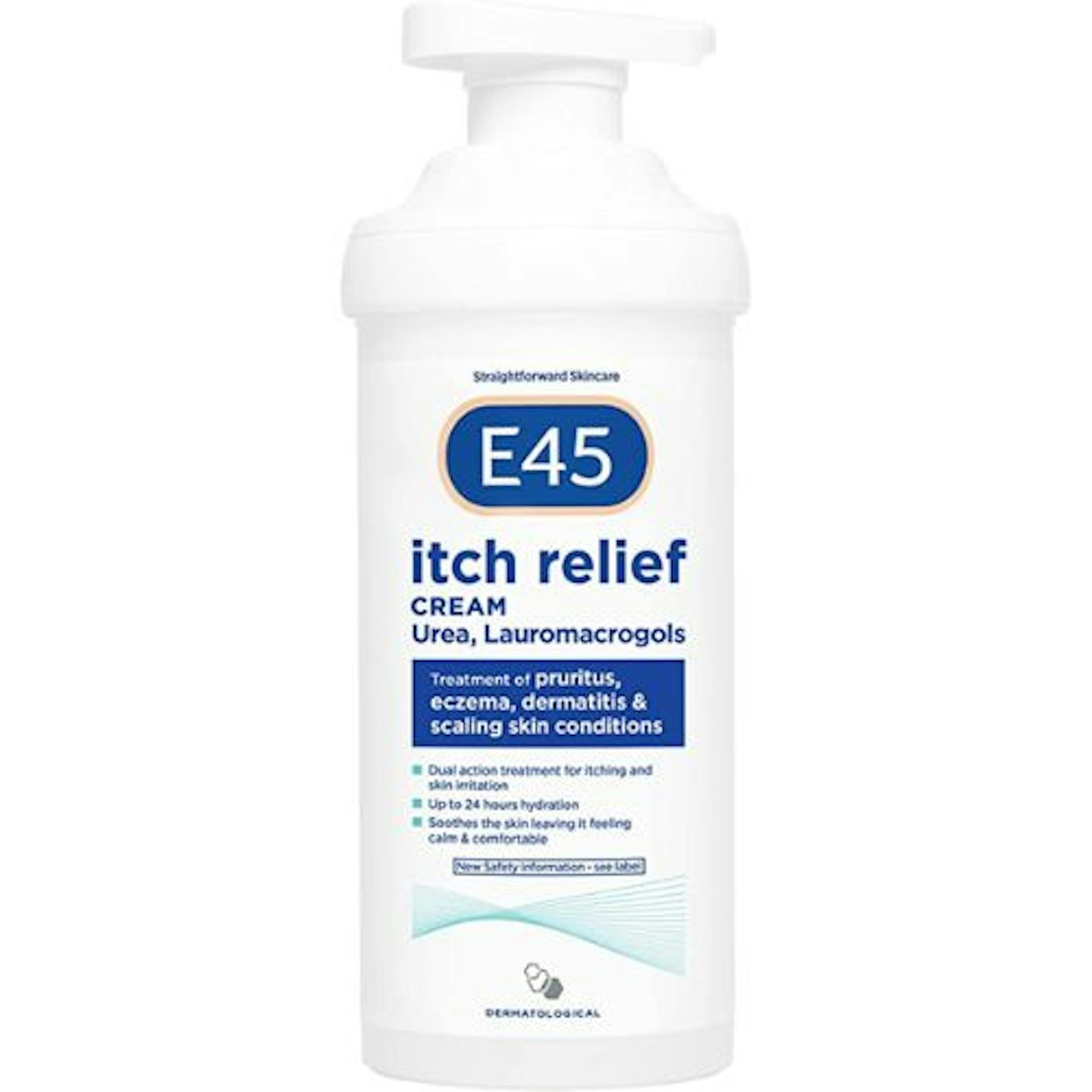
E45 Itch Relief Cream contains an anti-itch ingredient, Lauromacrogols, which acts as an anaesthetic and soothes the itch caused by skin conditions, including chickenpox. Your little one will love how this provides instant relief on their skin and our testers loved that it is non-greasy and easy to apply. Plus, although it is pricey, you do get a lot for your money. Our testers were impressed with how this cream helped to heal skin once the chickenpox spots had burst.
My experience: "Once the spots had all burst (and the chickenpox treatments had run out), I returned to using E45 on the children's skin. I found this helped the skin to heal very quickly. Throughout the following weeks, I would try to apply this cream every few hours to ensure that the skin was hydrated."
Pros
- Comes in an easy-to-use pump bottle
- Contains Lauromacrogols, an anti-itch ingredient
Cons
- Pricey, but you get a lot of it
| Volume: | 500g |
| Ingredients: | Lauromacrogols |
- Provides instant itch relief
- Non-greasy
- Hydrating
- Heals skin
How to recognise chickenpox
The NHS website states that the main symptom of chickenpox is an itchy spotty rash which can appear anywhere on the body. Unfortunately, this includes inside the mouth, around the genitals and on the scalp. Depending on your child's skin tone, they may be pink, red or a darker colour. If your child has black or brown skin, it can be harder to spot.
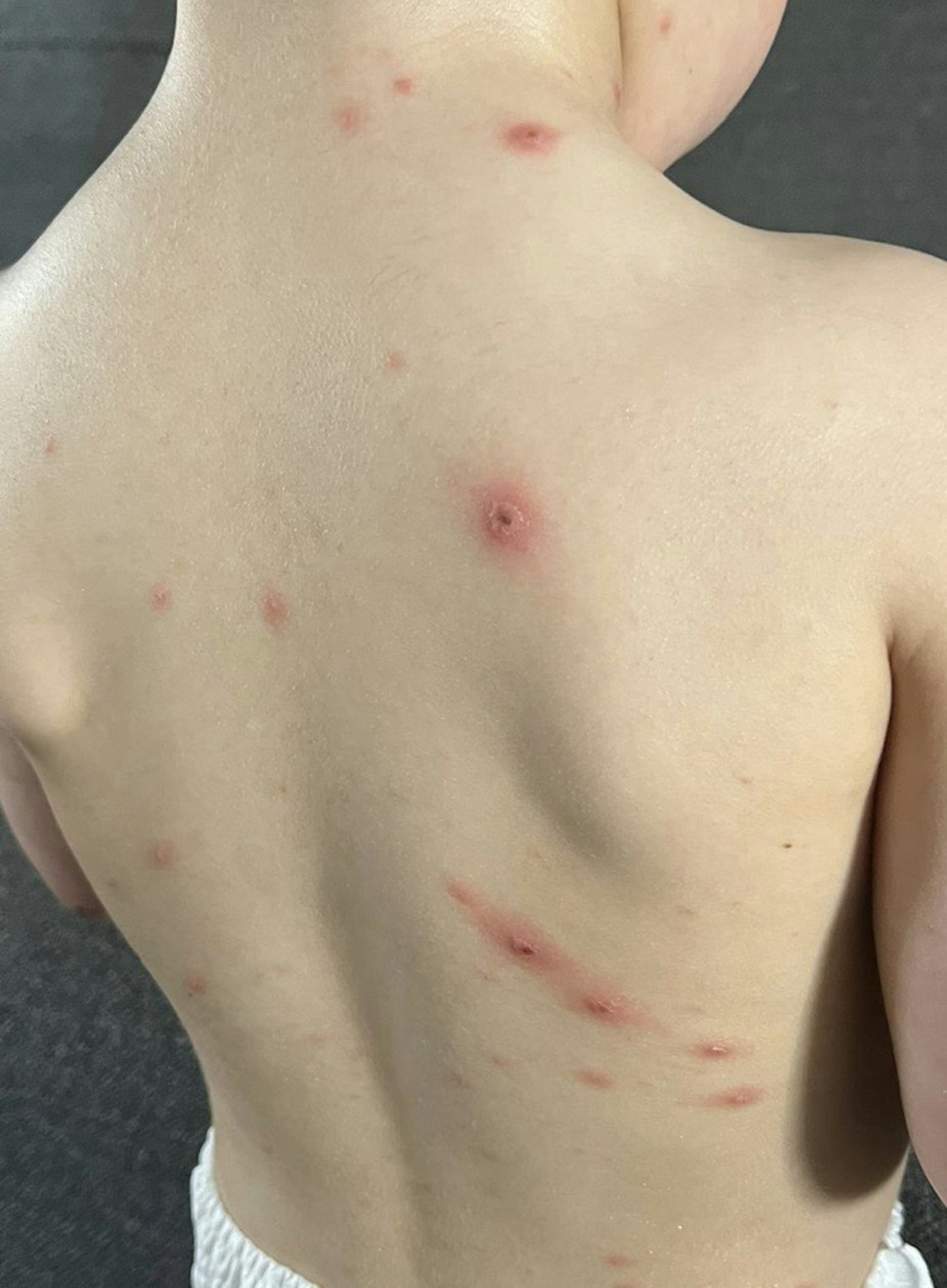
Before the spots appear, your child may begin to feel unwell. It is common for a child to have a high temperature, aches and pains or a loss of appetite. However, each child is different, and they may not have any symptoms at all before the spots appear.
Once the spots appear, they will fill with fluid. It is essential not to try and pop the spots. Although they can be itchy, try to discourage your little one from scratching them as this can leave to scarring.
Your little one will need to stay at home, and if possible, away from other children whilst they have chickenpox — although we appreciate this isn't always possible if you have more than one child. Dr Luke Powles advises: "Try to keep away from public places to help reduce the spread until all your spots have crusted over." This is because chickenpox is highly contagious. Once your little ones' spots have burst and scabbed over, they can return to normal social life. Just be aware that scabs can take a few weeks to disappear.
Is there anything I can do to prevent my child getting chickenpox?
The best way to prevent chickenpox is to get the chickenpox vaccine. The chickenpox vaccine is very safe and effective at preventing the disease. Speak to your GP about the benefits of the vaccination. Other than that, it's best to be prepared for when/if chickenpox comes into your home.
How long is the isolation period for chickenpox?
Your child must stay home from when the spots first appear to when they have scabbed over. Your child should not engage in any social activities outside the home or go to school whilst they still have chickenpox spots. Usually, the spots will scab over within a week. If you are unsure whether your child can go to school, contact your GP.
When to contact a doctor about chickenpox?
The NHS advises that most cases of chickenpox can be treated at home and will clear up without needing medical care within 1 - 2 weeks. However it is advisable to see a doctor if the skin around the chickenpox blisters becomes hot, red or painful. Also, see a doctor if you are worried that your little one has become dehydrated. They may have blisters in their mouth and drinking can be painful so if you are worried they are dehydrated get advice. You know your little one best, and if you are concerned that they are getting worse, or you are not sure if it's chickenpox or a different skin rash, then get medical advice. Dr Costa advises: "If your child’s skin looks red, inflamed, hot, and is leaking pus, they might have a skin infection, requiring urgent treatment. If your child is confused, can’t walk properly, develops a stiff neck, can't stand daylight, these might be signs of Meningitis or Encephalitis and you must seek urgent medical advice."
It is also advisable to seek professional help if you are pregnant and have not had chickenpox before, and you have been in contact with someone who has chickenpox. Similarly if you, or your little one has a weakened immune system and you come into contact with chickenpox then get some advice because you might need antiviral medications. Dr Luke Powles says: "You might then need anti-viral treatment, like Aciclovir, or Zovirax. Ideally, this medication needs to be taken within the first 24 hours of chickenpox spots appearing for the best chance of reducing symptoms and quickening your recovery time. In other cases, hospital-led immunoglobulin therapy may be needed."
It is also important to contact your doctor if your newborn baby contracts chickenpox, or as Dr Costa says: "Those with a weakened immune system, either due to having an immune condition or because they are taking long-term medication (chemotherapy, immunosuppressive medication or long-term steroids) or someone who has received an organ transplant. Those with a weakened immune system, who are over 12 years old, or who have a chronic skin or lung condition will also benefit from taking Acyclovir."
Are there other ways to soothe chicken pox?
Other than the remedies recommended above, there are a few easy home remedies you can try to give your child a little relief which work for other skin conditions too. A cooling bath (add oatmeal if you want) will help, or an ice lolly can bring a cooling feeling to them as well as keeping them hydrated if they are struggling to eat and drink. Also try a chamomile compress by placing some chamomile teabags in a. warm bath and dipping a cloth into the bath and dabbing it on your little one's itchy skin. Chamomile has anti-inflammatory and antiseptic effects on skin. Most importantly though, giving your little one your love and support will also really help, just knowing that you're there will soothe them mentally.
About the experts
Dr Costa has over 16 years of experience in Paediatrics. He is a member of the Royal College of Paediatrics and Child Health and has practiced as a senior medic in both the NHS and private sector, having led both the Paediatric Services at University Hospitals Coventry & Warwickshire and Sherwood Forest Hospitals NHS Foundation Trust.
Dr Luke Powles is the Clinical Director for Bupa Health Clinics. He was previously the Lead Physician for Bupa’s health clinics in Canary Wharf and King's Cross. Before joining Bupa, Luke was an NHS doctor for nearly 12 years working in both hospital medicine and general practice. He has a passion for preventative medicine.
Hannah James is a Parenting and Lifestyle Writer working across Mother&Baby, Yours and Grazia.
